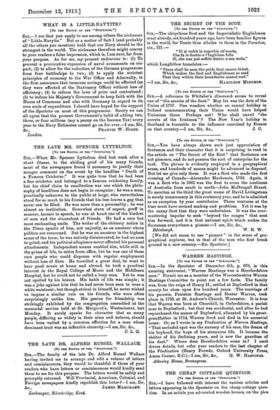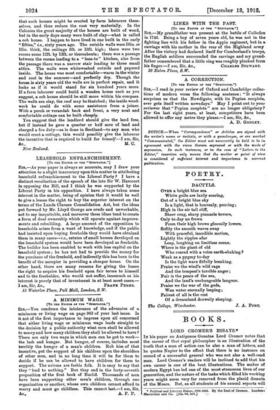THE CHEAP COTTAGE QUESTION.
[To THE EDITOR 01 THE "SPECTATOE.") Sin,—I have followed with interest the various articles and letters appearing in the Spectator on the cheap cottage ques- tion. In an article you advocated wooden houses, on the plea that such houses might be erected by farm labourers them- selves, and thus reduce the cost very materially. In the Colonies the great majority of the houses are built of wood, but in the early days many were built of clay—what is called a cob house. I happen to have lived in one built in the early " fifties," i.e., sixty years ago. The outside walls were 16in. or 1Sin. thick, the ceilings aft. or 1011. high ; there were two rooms some 12ft. by 13ft. or thereabouts ; there was a passage between the rooms leading to a " lean-to " kitchen, also from the passage there was a narrow stair leading to three small attics. The walls were whitewashed outside and papered inside. The house was most comfortable—warm in the winter and cool in the summer—and perfectly dry. Though the house is sixty years old the walls are in perfect repair, and it looks as if it would stand for six hundred years more. If a farm labourer could build a wooden house such as you suggest, a cob house should be still more within his compass. The walls are clay, the roof may be thatched ; the inside wood- wor•k he could do with some assistance from a joiner. With a porch or verandah back and front, a very neat and comfortable cottage can be built cheaply.
You suggest that the landlord should give the land free, but if instead he gave a quarter or half acre of land and charged a feu duty—as is done in Scotland—to any man who would erect a cottage, this would possibly give the labourer the incentive that is required to build for himself —I am, Sir,



























































 Previous page
Previous page